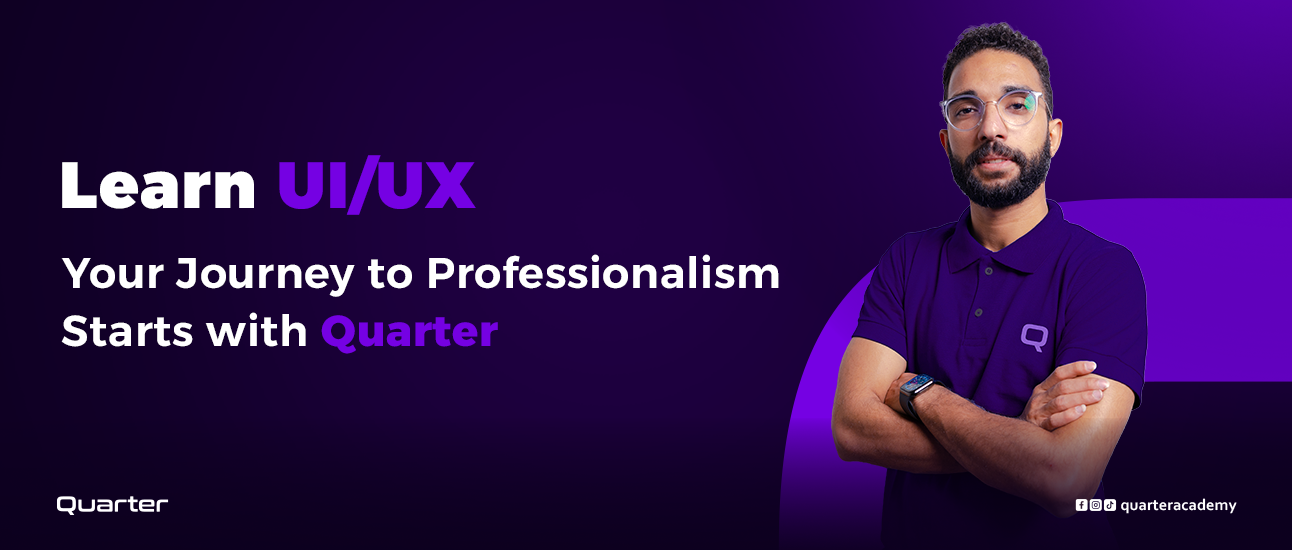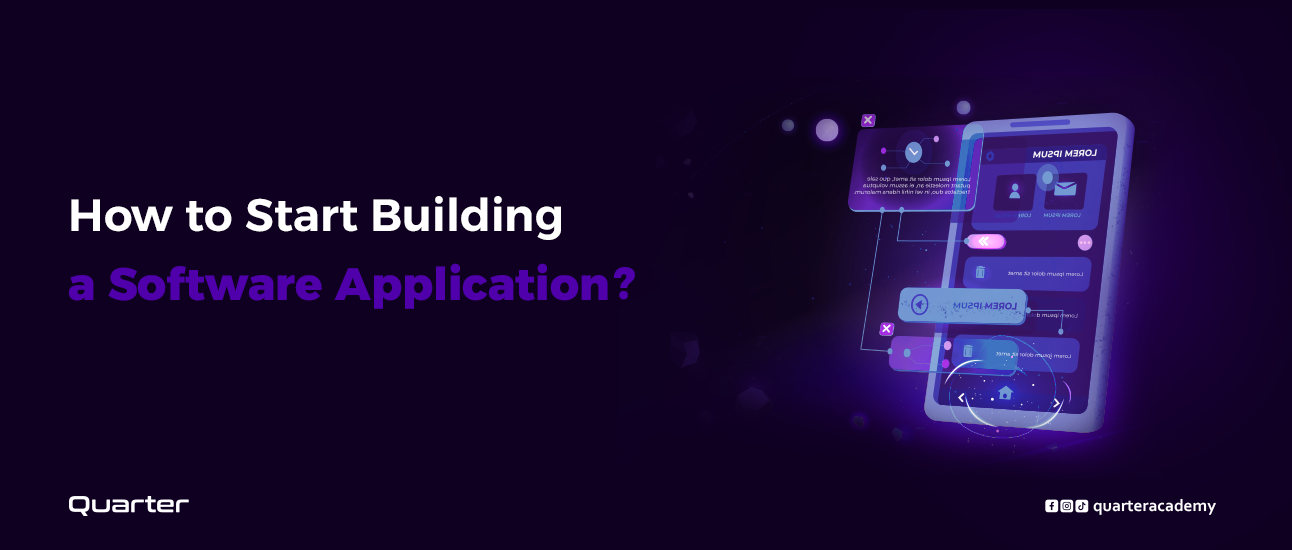Beginner's Guide to Programming: Learn Step by Step

Today, programming is one of the most essential skills that opens numerous doors in the job market. If you are a beginner seeking to learn programming from scratch, this guide is your starting point. In this article, we will cover the basics of programming, how to obtain a programming certificate, the best free resources for learning, and how to master programming in a short time.
1. Programming Basics for Beginners
A. What is Programming?
Programming is the process of writing instructions and commands for computers to perform specific tasks. Programming languages such as Python, JavaScript, and C++ are used to communicate with devices and produce various applications and software.
B. Why Learn Programming?
- Increased Job Opportunities: Programming is in high demand across many fields, including app development, data analysis, and web design.
- Remote Work Opportunities: Programming allows you to work as a freelancer or employee from anywhere in the world.
- Creative Problem-Solving: You can build applications and tools to solve everyday problems.
C. Best Programming Languages to Start With
- Python: Easy and simple, ideal for beginners in data analysis and web development.
- JavaScript: Essential for developing interactive web interfaces.
- HTML/CSS: For building and designing web pages.
2. How to Get a Programming Certificate?
A. Importance of Earning a Programming Certificate
Programming certificates enhance your resume and prove your skills to potential employers. They also provide an opportunity to learn through accredited and up-to-date curricula.
B. Most Popular Programming Certificates
- Python Certification (PCAP): Suitable for beginners and Python specialists.
- Java Certification: Accredited by Oracle, essential for app developers.
- Full Stack Development Certificate: Covers web development from front-end to back-end.
C. Where to Get Certified?
- Coursera
- Udemy
- edX
- LinkedIn Learning
3. How to Benefit from Free Programming Resources?
A. Best Free Resources to Learn Programming
- FreeCodeCamp: Provides practical courses to learn programming languages.
- Codecademy (Free Version): Interactive programming lessons.
- Khan Academy: Offers free lessons in JavaScript and HTML/CSS.
- CS50 by Harvard (on edX): A comprehensive computer science course.
B. Tips to Maximize Free Resources
- Dedicate daily time for learning and practice.
- Apply what you learn immediately by building simple projects.
- Participate in coding competitions and challenges on platforms like HackerRank and LeetCode.
4. How to Develop Your First Programming Project?
A. Choose the Right Idea
- A calculator application.
- A simple website to display your articles or resume.
- A task management application.
B. Use the Right Tools
- Visual Studio Code: For writing code.
- GitHub: To save and share your projects.
- Trello: To organize tasks and project phases.
C. Test and Modify the Project
- Always test your code, find errors, and fix them consistently.
- Ask friends and colleagues to try your project and give feedback.
5. How to Master Programming in a Short Time?
A. Daily Practice
Set aside daily time for writing code and solving programming problems.
B. Work on Real Projects
Join freelance platforms like Upwork or Fiverr to work on small programming projects.
C. Learn from Mistakes
Don’t fear programming errors—they are a natural part of learning. Read error messages carefully and try to understand their causes.
D. Ask for Help and Join Programming Communities
- Engage with programmers on platforms like Stack Overflow and Reddit.
- Participate in forums and exchange ideas and solutions.
Conclusion
Learning programming is an enjoyable and rewarding journey that can open many doors in the world of technology. By following simple steps and staying persistent, you can transition from a beginner to a professional in a short time. Take advantage of free resources, earn accredited certificates, and start building your own projects to stand out as a professional programmer in the job market.
Tags
related articles
view all
How to Study Effectively During Ramadan? Tips to Organize Your Time and Increase Focus
The holy month of Ramadan is a blessed time that provides an opportunity for spiritual and personal growth. However, many students struggle with studying during Ramadan due to changes in daily routines and the effects of fasting on concentration. Despite these challenges, you can take advantage of this month to manage your time efficiently and achieve maximum productivity by following strategic study techniques.
In this article, we will share the best methods to enhance studying during Ramadan, helping you stay focused and make the most of your time without feeling exhausted.
Why is Studying During Ramadan More Challenging?
Many students face difficulties while studying during Ramadan because of:
Change in daily routine: Altered sleep and wake-up schedules may affect concentration.
Fatigue due to fasting: A long period without food and water can lower energy levels.
Religious and family commitments: These may reduce available study time.
However, with proper planning and time management, studying during Ramadan can become more efficient and productive.
Best Tips to Organize Your Time and Increase Focus While Studying During Ramadan
1. Identify Your Peak Concentration Hours
Each person’s energy levels fluctuate throughout the day, so it's important to know when you are most focused. The best times for studying during Ramadan are:
After Suhoor: Your body is energized, and your mind is alert.
After Taraweeh prayers: You will have rested and regained energy.
One or two hours before Iftar: This is a good time for light revision.
2. Create a Flexible Study Schedule
For studying during Ramadan to be effective, set up a flexible study plan that accounts for fasting, prayers, and rest. Try dividing your day as follows:
Before Iftar: Light revision or solving easy exercises.
After Iftar: Studying subjects that require high concentration.
After Taraweeh: Allocating time for memorization or quick reviews.
Use tools like Google Calendar or study planning apps to organize your tasks efficiently.
3. Maintain a Balanced Diet
Nutrition plays a major role in enhancing studying during Ramadan. Consume meals rich in:
Proteins (eggs, chicken, fish) to boost concentration.
Complex carbohydrates (oats, brown rice) for sustained energy.
Nuts and dried fruits to enhance mental activity.
Avoid fatty and fried foods, as they cause sluggishness and affect focus.
4. Minimize Distractions While Studying
One of the biggest obstacles to studying during Ramadan is distractions like smartphones and social media. Here’s how to avoid them:
Switch your phone to airplane mode or use distraction-blocking apps.
Listen to soft instrumental music or nature sounds for better concentration.
Apply the Pomodoro Technique: Study in focused 25-minute sessions, followed by short breaks.
5. Get Enough Sleep
Proper sleep improves concentration and enhances studying during Ramadan. Try to sleep early and wake up for Suhoor to ensure you get enough rest.
Tips for better sleep:
Avoid caffeine-rich drinks before bed.
Sleep in a dark, quiet room.
Practice meditation or deep breathing before sleeping.
6. Engage in Light Physical Activity
You might think exercising while fasting is difficult, but light activities like walking or deep breathing exercises can improve blood circulation to the brain, enhancing studying during Ramadan. It’s best to exercise an hour or two after Iftar to maintain energy levels.
7. Use Prayer and Reflection Time to Refresh Your Mind
Prayer and religious activities can be an excellent way to recharge mentally and improve focus. Take a few minutes after each prayer to reflect on your study goals and refresh your energy.
How to Motivate Yourself to Study During Ramadan?
Staying committed to studying during this holy month can be challenging. Try these motivation techniques:
Reward yourself after completing study sessions with something you enjoy.
Set small daily goals and track your progress.
Change your study environment occasionally to break the monotony.
Study with friends online or review lessons together.
Studying During Ramadan: An Opportunity for Growth and Self-Improvement
Don’t let fasting become an obstacle to your studies. Instead, use it as a chance to develop time management and self-discipline skills. By organizing your time, eating healthy, and identifying your peak focus hours, you can make studying during Ramadan an enriching and productive experience.
Start implementing these tips today and get ready to achieve the best academic results during Ramadan!

Learn UI/UX – Your Journey to Professionalism Starts with Quarter
With the rapid advancement of technology and the increasing demand for intuitive, user-friendly digital products, the field of User Interface and User Experience Design (UI/UX) has become one of the most sought-after professions in today's job market. If you're looking to break into this field with confidence and the right foundation, you need to start with the right instructor and the right program that reflects real market needs.
At Quarter Academy, we believe that the success of any training program starts with strong content and experienced mentorship. That’s why we’re proud to offer one of the most comprehensive and practical UI/UX programs — led by top industry expert, Saeed Gamal.
Who Is Saeed Gamal? And Why Is He Considered One of the Best in UI/UX?
Saeed Gamal is a Senior Product UX/UI Designer with over 5 years of experience designing and developing interfaces and user experiences for a wide range of systems and applications in Egypt, Saudi Arabia, and Jordan. He is currently the UX Design Lead at Al-Alamiya Al-Hura in Egypt, leading a team of over 10 designers from various backgrounds and cultures.
Beyond his professional work, Saeed teaches UX Design at Mansoura University (Faculty of Computer and Information Science), where he leads a summer program aimed at equipping students with a deep, hands-on understanding of user-centered design and interaction principles.
His experience includes:
- Designing over 50 digital products, including mobile apps, websites, dashboards, and POS systems.
- Collaborating with companies like Nabadat (Saudi Arabia), Levntura & Ticlick (Jordan), Serv5 and Watania Solutions (Egypt).
- Teaching UX design fundamentals at Mansoura University.
- Leading and mentoring a full design team, developing their skills and performance.
What Makes Quarter’s UI/UX Program Different?
- Professionally Designed Curriculum Based on Market Needs
Our training program is carefully developed to align with the latest global standards and to cover all stages of the UI/UX design process — from research to final delivery. The curriculum includes:
- Introduction to UX and the Software Development Life Cycle (SDLC)
- User research and data analysis
- Information Architecture and user flow design
- Interface design using Figma
- UX laws and visual design systems
- Advanced Design Systems
- Usability Testing
- Advanced tools such as Webflow and Framer
- A final capstone graduation project
Hands-On Training and Real Projects
This is not just a theoretical course — it’s a practical experience. You’ll work on real-world assignments and projects throughout the training period. By the end of the course, you’ll have a strong portfolio that showcases your skills and boosts your chances of landing real job opportunities.
Direct Mentorship from Saeed Gamal
With Saeed’s guidance, you’ll experience a learning journey that blends academic fundamentals with real-world practices. He will personally review your work and offer actionable feedback to support your growth and confidence.
Continuous Support and Certified Credentials
Upon completing the program, you’ll receive:
- A Certificate of Completion from Quarter Academy
- An official Training Certificate from a partner company (upon successful delivery of your graduation project)
Additionally, Quarter offers post-training support for top students through professional mentorship and career consultation sessions.
Why Start Now?
- The demand for UI/UX designers is growing rapidly, and companies are seeking professionals who can deliver functional, user-centered design solutions.
- Learning from an expert like Saeed Gamal saves you years of trial and error and gets you on the right track faster.
- The program is suitable for beginners or anyone with a basic background in design looking to advance into a real career.
If you’re looking for a solid, professional start in the field of UI/UX design, Quarter Academy’s program — led by Saeed Gamal — is your best choice. It combines quality content, hands-on experience, and real-world mentorship to give you everything you need to enter the field with confidence and skill.
Don’t wait for the opportunity — create it.
Register now and begin your professional journey with Quarter.

How to Start Building a Software Application?
Developing a software application may seem challenging at first, but it becomes manageable with clear, structured steps. Here's a comprehensive guide to help you start your journey in creating an application:
Steps to Create a Software Application:
- Define Your App Idea:
- Choose an idea that addresses a specific problem or provides an innovative solution. For instance, consider a task management app or an educational application.
- Choose the Right Programming Language:
- Your choice depends on the platform you want to target:
- Swift for iOS apps.
- Java or Kotlin for Android apps.
- JavaScript for web or cross-platform apps.
- Learn the Basics:
- Ensure you have a strong grasp of programming fundamentals such as variables, functions, loops, and data structures.
- Design the User Interface (UI):
- Use tools like Figma or Sketch to design the UI and create a prototype of your application.
- Start Coding:
- Utilize integrated development environments (IDEs) like Xcode for iOS or Android Studio for Android to begin writing the core code for your app.
- Test Your Application:
- Run your app on various devices to identify bugs and improve performance.
- Launch the Application:
- After completing development and testing, publish your app on app stores like App Store or Google Play.
How to Overcome Challenges Faced by Beginners in Programming?
Programming can be daunting for beginners, but these tips can help you tackle common challenges:
- Start with Small Projects:
- Avoid large, complex projects at the start. Begin with simple tasks like creating a calculator.
- Learn from Mistakes:
- Mistakes are a natural part of the learning process. Research solutions and learn from errors.
- Join Programming Communities:
- Engage with other programmers on platforms like GitHub and Stack Overflow to exchange knowledge and advice.
- Commit to Continuous Learning:
- Stay updated with the latest technologies and continuously learn new techniques.
10 Tips for Learning Programming Faster
- Set a Clear Goal:
- Knowing why you want to learn programming helps you stay focused.
- Pick One Programming Language:
- Concentrate on a single language that aligns with your goals.
- Start with the Basics:
- Master fundamental concepts before diving into advanced techniques.
- Use Multiple Learning Resources:
- Explore online courses, books, and tutorial videos.
- Practice Daily:
- Consistent practice reinforces understanding and skills.
- Work on Practical Projects:
- Apply your knowledge by building small, functional projects.
- Embrace Mistakes:
- Errors are opportunities to learn. Understand and fix them.
- Read Others’ Code:
- Study professional developers’ code to expand your understanding.
- Leverage Coding Tools:
- Use platforms like CodePen and Replit to test and experiment with code.
- Stay Patient:
- Programming takes time and effort. Don’t expect immediate results.
Why Is Programming an Essential Skill in the Digital Era?
In today’s digital age, programming is a vital skill for several reasons:
- High Demand in the Job Market:
- Programming skills are needed in fields like app development, artificial intelligence, and data analysis.
- Enhanced Critical Thinking:
- Programming improves analytical thinking and problem-solving abilities.
- Opportunity for Innovation:
- Programming enables you to create innovative tech solutions.
- Flexible Career Opportunities:
- Programmers enjoy remote work options and lucrative salaries.
How to Get a Job as a Junior Programmer?
- Build a Portfolio:
- Showcase your projects on platforms like GitHub to increase your chances of employment.
- Learn In-Demand Skills:
- Focus on mastering skills that are highly sought after in the job market.
- Earn Certifications:
- Certifications such as Google Certified Developer add value to your resume.
- Participate in Programming Competitions:
- Competitions like Hackathons help demonstrate your abilities.
- Seek Internship Opportunities:
- Internships provide practical experience that helps you break into the industry.
Conclusion
Learning programming is an exciting and rewarding journey that starts with mastering the basics and gradually building skills. With patience and consistent practice, you can overcome challenges, accelerate your learning process, and secure a job as a junior programmer in a world brimming with digital opportunities.
Courses
Subscribe
make the right move for your future.
Powered By
© 2025 Quarter. All Rights Reserved